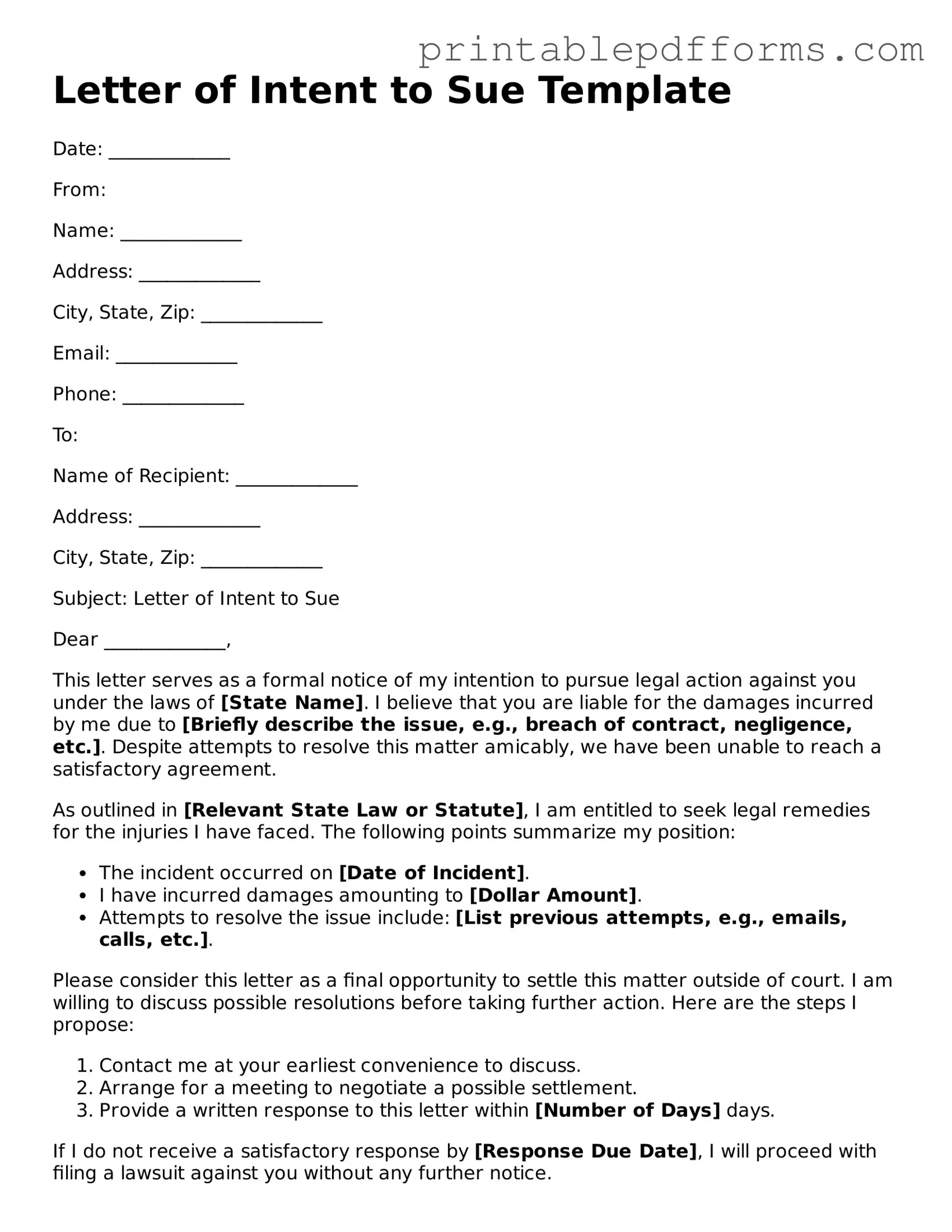Letter of Intent to Sue Template
Date: _____________
From:
Name: _____________
Address: _____________
City, State, Zip: _____________
Email: _____________
Phone: _____________
To:
Name of Recipient: _____________
Address: _____________
City, State, Zip: _____________
Subject: Letter of Intent to Sue
Dear _____________,
This letter serves as a formal notice of my intention to pursue legal action against you under the laws of [State Name]. I believe that you are liable for the damages incurred by me due to [Briefly describe the issue, e.g., breach of contract, negligence, etc.]. Despite attempts to resolve this matter amicably, we have been unable to reach a satisfactory agreement.
As outlined in [Relevant State Law or Statute], I am entitled to seek legal remedies for the injuries I have faced. The following points summarize my position:
- The incident occurred on [Date of Incident].
- I have incurred damages amounting to [Dollar Amount].
- Attempts to resolve the issue include: [List previous attempts, e.g., emails, calls, etc.].
Please consider this letter as a final opportunity to settle this matter outside of court. I am willing to discuss possible resolutions before taking further action. Here are the steps I propose:
- Contact me at your earliest convenience to discuss.
- Arrange for a meeting to negotiate a possible settlement.
- Provide a written response to this letter within [Number of Days] days.
If I do not receive a satisfactory response by [Response Due Date], I will proceed with filing a lawsuit against you without any further notice.
Thank you for your prompt attention to this matter. I hope we can resolve this issue amicably.
Sincerely,
__________________________
[Your Name]
